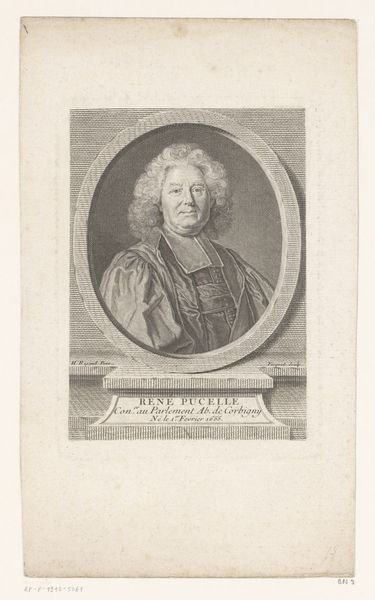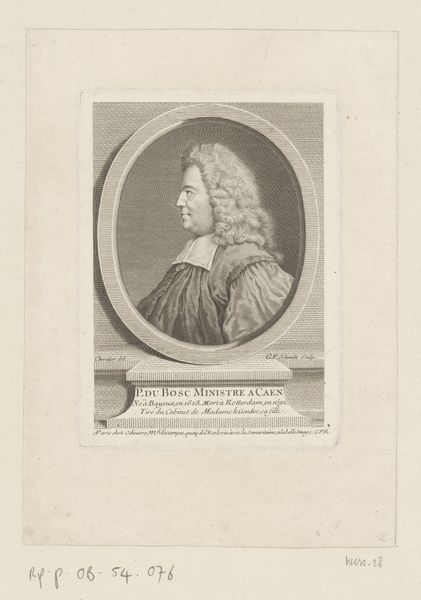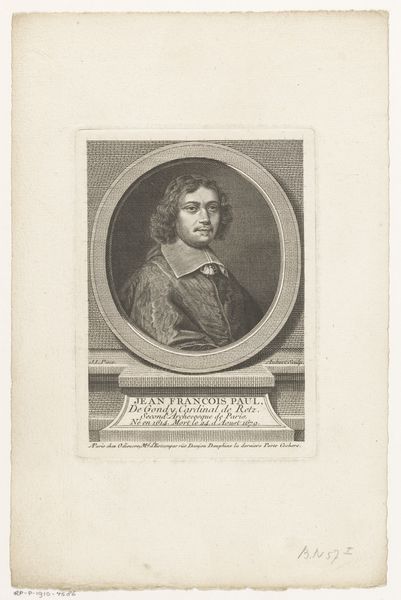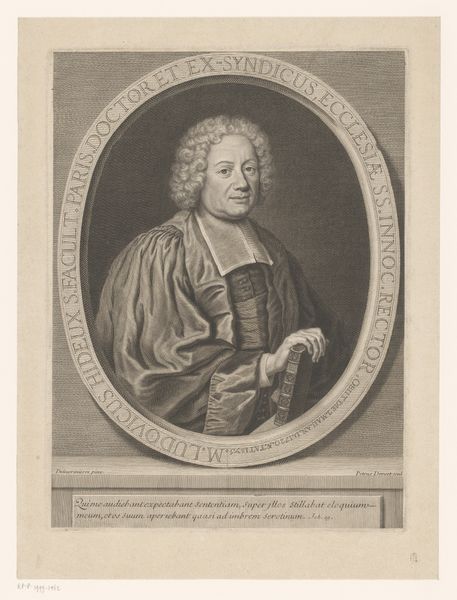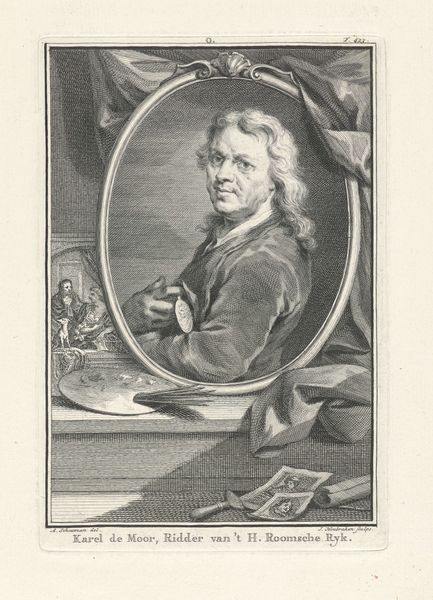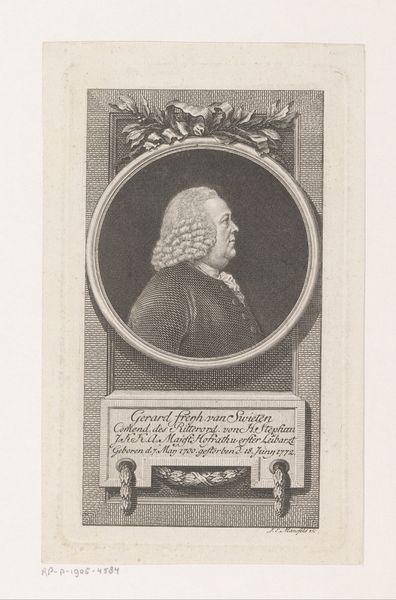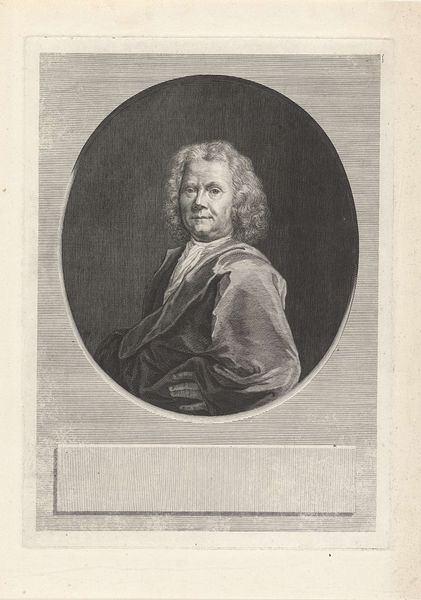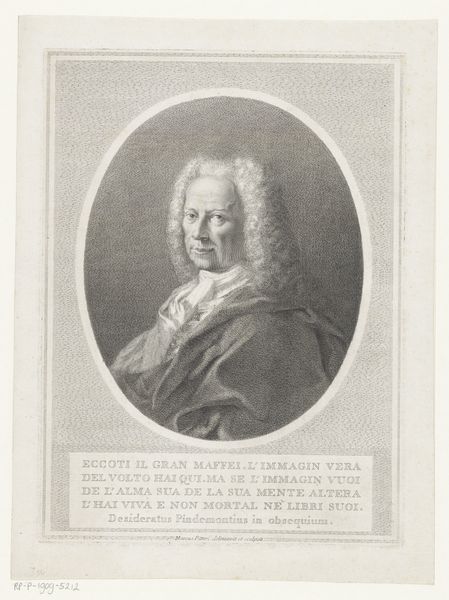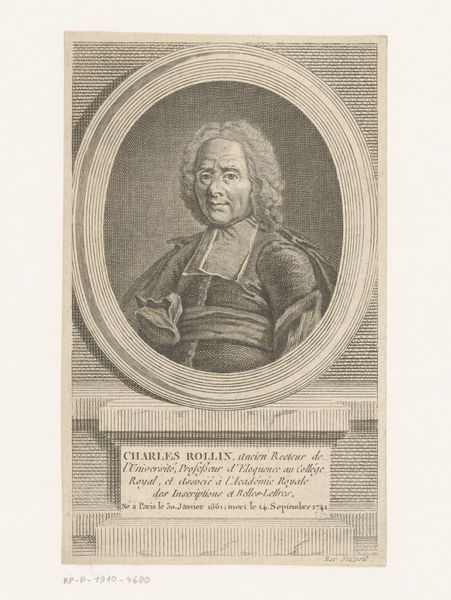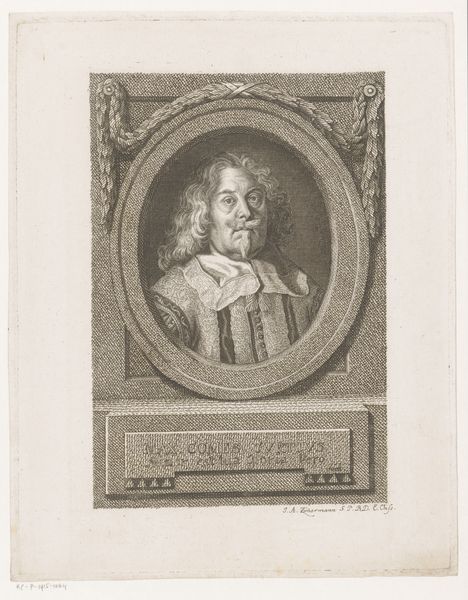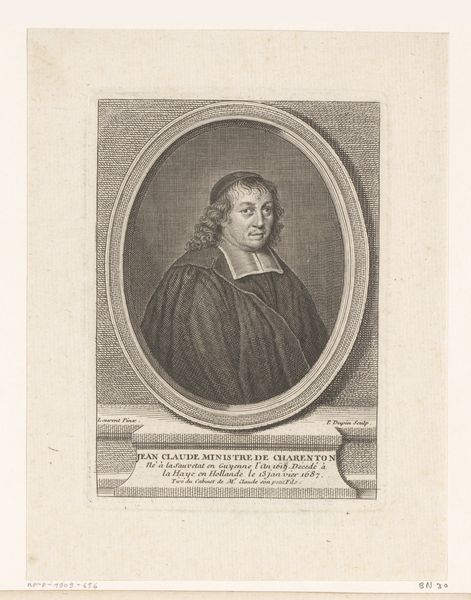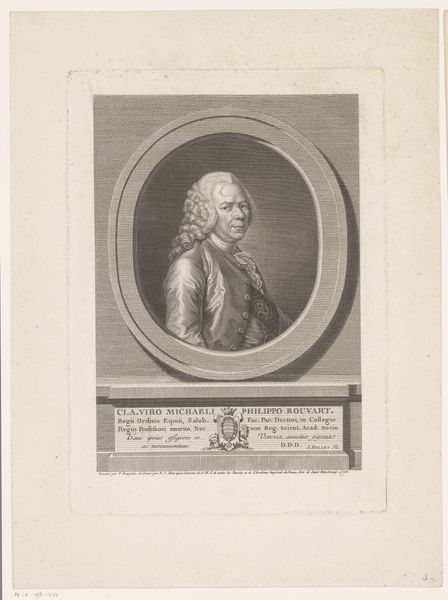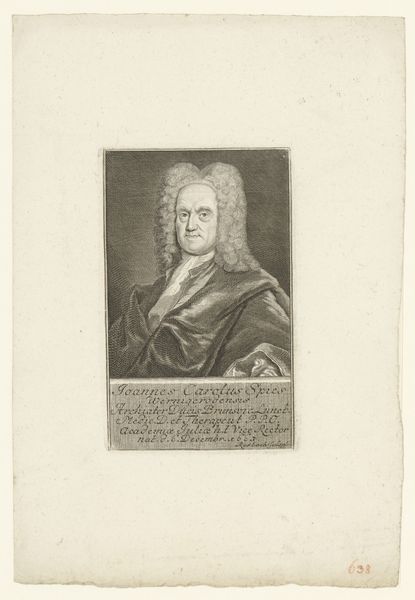
engraving
#
portrait
#
baroque
#
history-painting
#
engraving
Dimensions: height 149 mm, width 109 mm
Copyright: Rijks Museum: Open Domain
Curator: Well, here we have Nicolas Gabriel Dupuis’ 1738 engraving, "Portret van Herman Boerhaave." The figure seems serious, dignified, like an official portrait of importance. How do you respond to this print? Editor: I think you're right. It’s certainly very formal. I’m curious – what symbols or ideas stand out to you most prominently? Curator: Consider the oval frame itself, a symbol of cyclical time and continuity. Boerhaave is encased, enshrined almost, within a tradition of knowledge. And beneath him, inscription proclaims his identity. Can you think about why someone would create the image and surround him in those ways? Editor: I see your point. Boerhaave wasn't just anyone. It’s like he's being presented as an icon of Enlightenment science. Almost immortalized by science. Curator: Precisely. Look closer: does the style – that crisp line work and clear depiction – amplify that impression of clarity and rationalism so central to the Enlightenment ideal? Consider how the print medium itself makes his image and ideas reproducible. It’s not a singular painted commission, it is one of potentially many images. Editor: That makes me wonder if that reproducibility also contributes to his importance, that this could become a symbol of intellectual authority across a broad audience? I mean the portrait would be available for longer because it can be reproduced over time and to different contexts and audiences. Curator: Exactly! His visual presence, replicated and disseminated, extends his influence beyond his lifetime, reinforcing his symbolic role. So much history locked in one symbolic image. Editor: I hadn’t considered the effect of the print on his legacy in quite that way. Now I’m viewing this portrait through a completely new lens. Curator: Indeed. Every artistic choice reflects and shapes cultural memory.
Comments
No comments
Be the first to comment and join the conversation on the ultimate creative platform.
